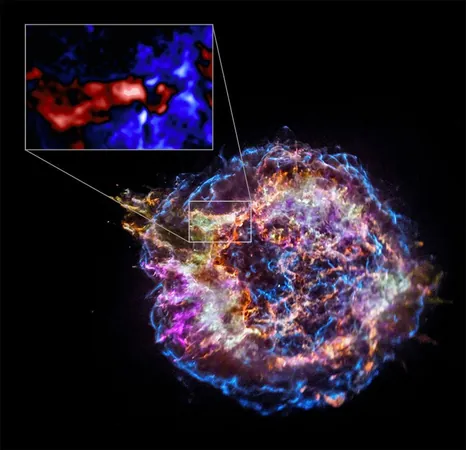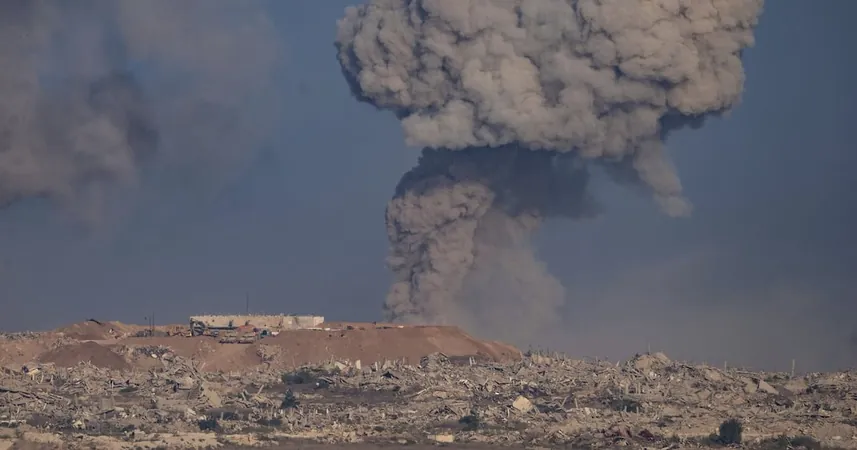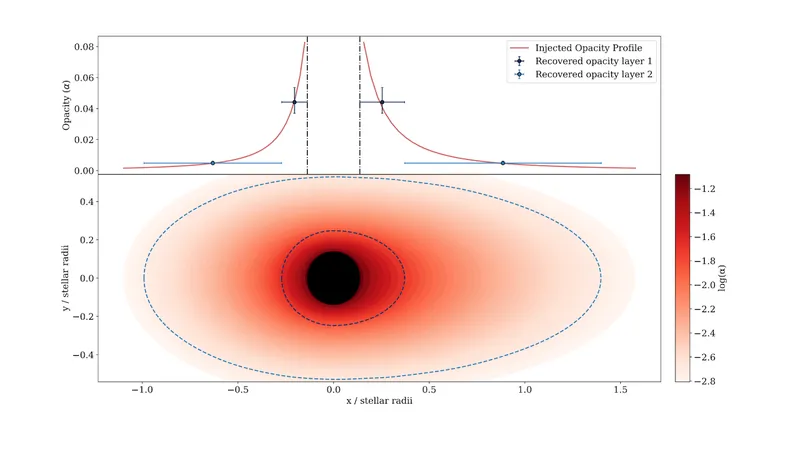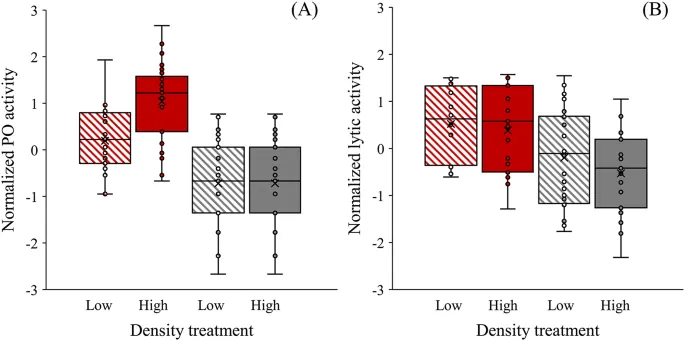
Revealing the Chaotic Heart of a Supernova: New Discoveries About Cassiopeia A
2025-09-02
Author: William
A Star's Fiery Transformation: 11,300 Years Ago
More than 11,300 years ago, a colossal star was on the brink of destruction. As it pulsated with energy, it shed its outer layers into the cosmos, ultimately culminating in a spectacular supernova explosion. This dramatic event produced what we now know as Cassiopeia A (Cas A), one of the most extensively studied supernova remnants in existence.
Unraveling the Mystery of Cas A
The progenitor star of Cas A is estimated to have boasted between 15 to 30 solar masses and was likely a red supergiant. There's ongoing debate among experts about its precise nature, with some suggesting it may have been a Wolf-Rayet star. Regardless, when its core became iron-heavy, it could no longer sustain itself and exploded—a dazzling light that finally reached Earth around the 1660s.
Astronomical Insights from Chandra X-Ray Telescope
Recent observations utilizing the Chandra X-ray telescope reveal new layers of detail about this prominent supernova remnant. A study published in *The Astrophysical Journal*, led by Toshiki Sato from Meiji University, emphasizes the groundbreaking findings from Chandra’s data and sophisticated computer models. Sato remarked, "Every time we closely examine Cas A's data, we uncover new and exciting insights."
The Challenge of Observing Supernova Explosions
Studying supernovae poses a unique difficulty: the explosion itself tends to be the catalyst for observation. Understanding the last moments before a star goes supernova has been elusive for astrophysicists. Recent research focuses on the complex internal processes leading to a star's dramatic fate—insights critical to understanding the mechanics of its eventual explosion.
Intricate Nucleosynthesis Unveiled
As a massive star edges closer to supernova status, it undergoes nucleosynthesis—fusing lighter elements into heavier ones until iron forms. When the core reaches about 1.4 solar masses, it can no longer withstand gravitational collapse, resulting in a catastrophic explosion.
Discoveries of the Shell Merger
Through combined observations and modeling, researchers peeked into Cas A’s final moments, revealing an astonishing 'shell merger.' "Moments before collapse, silicon-rich material surged outward, colliding with neon-rich zones inward," explained Kai Matsunaga, co-author of the study. This chaotic mixing resulted in patches of both elements coexisting—something never documented previously.
Redefining Supernova Explosions
Traditionally, supernovae were thought to be symmetrical events, but this groundbreaking research challenges that notion. This asymmetry may also provide explanations for how neutron stars are propelled at high velocities. Furthermore, the tumultuous conditions leading to the explosion may have played a crucial role in triggering it.
A Glimpse into Stellar Histories
The implications of these findings stretch far beyond the initial explosion, changing our understanding of stellar evolution and fate. Co-author Hiroyuki Uchida emphasized, "The internal structure alterations during these final moments could influence whether a star becomes a supernova at all." This research opens up doors for deeper exploration of stellar interiors, revealing profound consequences for their explosive endings.
The Future of Stellar Research
This study offers a critical glimpse into the life cycle of stars and the intricate processes that define their explosive fates, painting a more complex picture of the universe's most monumental events.









 Brasil (PT)
Brasil (PT)
 Canada (EN)
Canada (EN)
 Chile (ES)
Chile (ES)
 Česko (CS)
Česko (CS)
 대한민국 (KO)
대한민국 (KO)
 España (ES)
España (ES)
 France (FR)
France (FR)
 Hong Kong (EN)
Hong Kong (EN)
 Italia (IT)
Italia (IT)
 日本 (JA)
日本 (JA)
 Magyarország (HU)
Magyarország (HU)
 Norge (NO)
Norge (NO)
 Polska (PL)
Polska (PL)
 Schweiz (DE)
Schweiz (DE)
 Singapore (EN)
Singapore (EN)
 Sverige (SV)
Sverige (SV)
 Suomi (FI)
Suomi (FI)
 Türkiye (TR)
Türkiye (TR)
 الإمارات العربية المتحدة (AR)
الإمارات العربية المتحدة (AR)